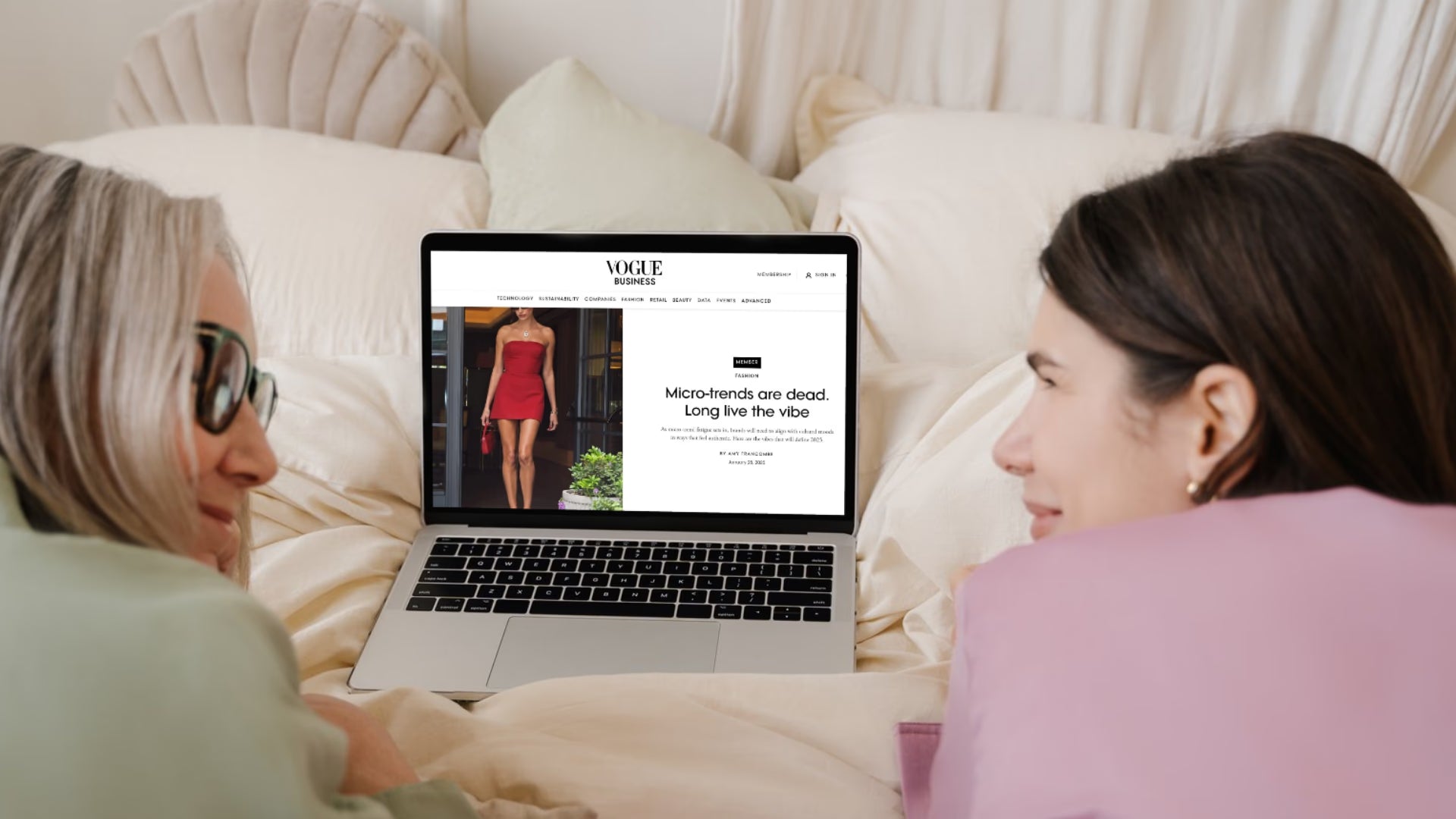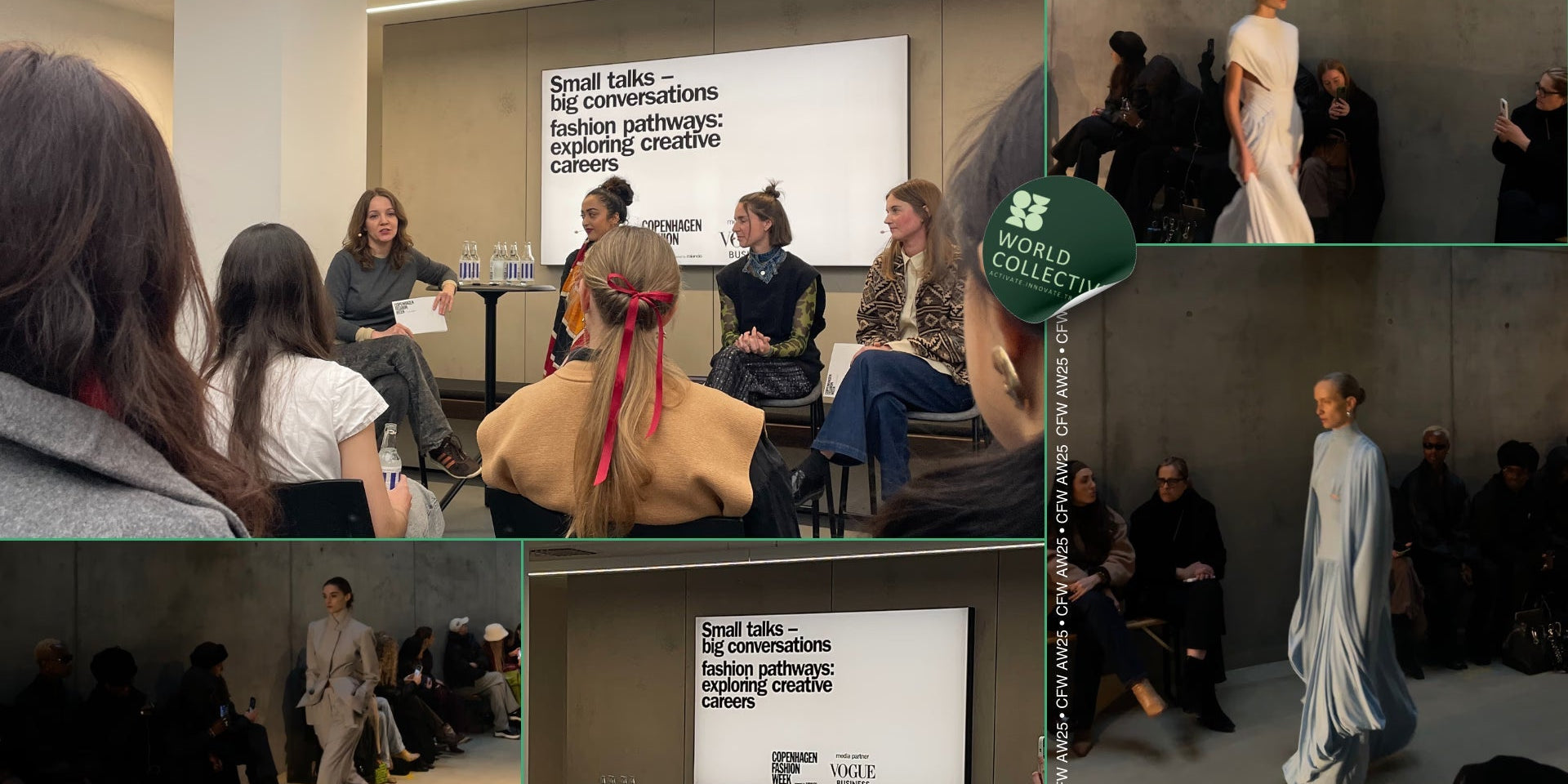Micro-trends and the rise of aesthetics and “cores” aren’t new to the fashion scene. But they’re more relevant than ever, especially with fast fashion's impact still in the spotlight.
Since social media’s boom, fashion consumption and trend cycles have drastically changed. Just a quick scroll through TikTok, Instagram, or Pinterest shows how fast new aesthetics or “cores” (suffix popularized to represent niche aesthetics) emerge and fade, often disappearing within weeks, only to be replaced by the next big thing.
Trends have always been part of fashion, of course. But in recent days, the issue lies in their rapid turnover. That’s where micro-trends and aesthetics like cottagecore, dark academia, coastal grandma, and more come into play—creating a never-ending loop of consumption that’s hard to keep up with.
Not only did the fast-fashion industry surf in that wave but also luxury brand houses have incorporated micro-trends and specific “cores” to its collections in the past recent years.
Some peers argue that the concept of micro-trends is inherently problematic: Given their fast-paced, repetitive cycle that fuels overconsumption and excludes those who can’t afford to chase every new trend; others suggest they could actually change the direction of the fashion industry. In this view, micro-trends could create a world where high fashion looks to the public to shape its collections rather than dictating them.
In other words, according to this perspective, this shift would place the public at the center of fashion, rather than being “manipulated” to conform to predefined trends and styles.
While this debate is valuable, a new conversation is taking center stage: micro-trends are ironically losing their “trendiness” in 2025.
“Micro-trends are dead. Long live the vibe.” That was the bold title from a recent Vogue article, that highlights how fatigue with micro-trends is paving the way for brands to align with cultural moods more authentically.

Now, “cores” are fading into the background, and “vibe” is taking the spotlight. According to author and journalist Jess Cartner-Morley in a recent The Guardian article, “The thrill of a vibe is that it leads with emotion, not with spending power. It feels like playing hooky from a world where we are kettled by capitalism.”
What does that mean for brands? It’s can be about creating with authenticity, slowing down production, and embracing creativity, uniqueness and sustainability—an exciting opportunity, especially for small and emerging brands.
Let’s explore how to navigate this new landscape, leverage it to your advantage, and learn from brands already proving that authenticity, creativity, and mindful manufacturing can drive success.
Expressing your Brand’s Vibe
Fashion is now about capturing a vibe—more than just an aesthetic, it’s about conveying a whole mood.
This shift is linked to a growing sentiment among some groups: a weariness of social media, a desire for in-person connections, and a pushback against narratives shaped by the internet and capitalism.
They’re seeking what feels real and human. This creates the perfect landscape for brands that champion authenticity to thrive. Here’s how to succeed in this environment—not opportunistically, but genuinely:
-
Tell Your Story
What’s the story behind your brand? How did it all begin? What inspired you? Infuse your narrative into your clothing designs and communication strategies. Authentic storytelling not only builds emotional connections but also sets you apart in an oversaturated market.
-
Invest in Longer-Lasting, Sustainable Collections
Instead of producing frequent, trend-chasing collections, focus on creating intentional designs with meaning and purpose. Consider the story behind each piece and the message you want to convey. This approach encourages creativity and authenticity, attracting customers who value uniqueness over fast fashion.
-
Revamp Your Inventory with Circularity
Refresh your existing inventory using eco-friendly methods instead of launching entirely new collections. Explore techniques like natural dyeing or digital printing to breathe new life into old designs. Share behind-the-scenes stories and transformation journeys on your social channels to engage your audience.
-
Optimize Production Efficiency
Strategic engineering in production—like adjusting fabric widths, pattern layouts, and size ratios—can significantly reduce waste and carbon footprint. Collaborate closely with your suppliers to maximize efficiency, minimize environmental impact, and reduce costs. These savings can then be reinvested into other areas of your brand.
Platforms like World Collective bridge the gap by offering on-trend, environmentally certified materials, empowering you to create consciously without sacrificing style.
Plus, it connects your brand with certified textile suppliers who align with your values and goals.
These approaches can help you evolve from chasing trends to building genuine brand identity.
Does that mean completely overlooking emerging fashion trends and concepts? Not necessarily. It’s still crucial to stay informed about what the industry is buzzing about. Trends have always been part of fashion, and while authenticity is on the rise, trends aren’t disappearing from the scene anytime soon.
The key is to stay tuned to influential fashion reports, like Pantone’s Color of the Year, and learn how to incorporate them authentically into your brand’s creations.
In one of our blog posts, we explore how to embrace Pantone’s Color of the Year—Mocha Mousse—without falling into the cycle of overproduction and environmental strain (we also cover how to do this with trends in general, so don’t miss it.)
péro: an Inspiration of Circularity, Authenticity and Cultural Heritage
Drawing inspiration from brands that prioritize authenticity can be a powerful step in redefining your own approach.
One remarkable example is péro, an Indian brand that has been creating meaningful, sustainable fashion for over 15 years. péro masterfully blends sustainability with craftsmanship, setting a high standard for intentional fashion.

Photo credit: Santa Fe Dry Goods
____
Their commitment goes beyond eco-friendly local sourcing and 100% handmade creations. By producing only two collections per year, péro ensures minimal waste and rejects the pressures of mass production.
Here’s what makes péro truly stand out:
-
No waste: Thoughtful production prevents excess and environmental strain.
-
No mass production: Each piece is uniquely crafted, emphasizing quality and intention.
-
Only two collections a year: Focuses on thoughtful design and long-lasting collections, prioritizing quality over quantity.
-
Drawing inspiration from local materials and crafts: Honors local artisanship and materials, ensuring sustainable sourcing and cultural authenticity.
-
Storytelling through cultural heritage: Weaving the rich narrative of Indian traditions into each design.

Another thing that truly sets them apart is their documentation process. Every detail, from textiles to buttons, is meticulously documented and preserved, building a legacy rooted in responsibility and beauty.
For small brands, this approach is especially valuable because it allows to maintain a clear design identity, track sourcing transparency, and optimize resource use.
By keeping a detailed record of materials and designs, your brand can easily revisit past collections, repurpose unused inventory, and avoid unnecessary waste. It can also enables to stay true to your brand’s narrative, reinforcing authenticity while growing sustainably.

Picture by the World Collective team during a visit to péro's physical store in New Delhi, India.
_____
péro’s approach illustrates how fashion can be both innovative and deeply respectful of cultural roots. Their model serves as an inspiring example of how authenticity and sustainability can coexist beautifully.
World Collective’s team had the incredible opportunity to visit péro’s studio in India and dive into the heart of their beautiful, purpose-driven work. You can see how our full experience went here!
The Bigger Picture: Redefining Fashion Trends for Authenticity
The future of fashion isn’t about rejecting trends and acting 100% against the current system—it’s about embracing them responsibly.
Whether it's color trends—like the rise of pastels or Mocha Mousse—it's essential to approach them with intention. To do so, here are some key questions we can ask ourselves:
-
What purpose does this trend serve beyond just looking good?
-
How can we use resources responsibly to bring it to life?
-
How can we create pieces that last longer than the trend itself?
-
What sustainable, ethical brands can I use as inspiration?
-
How can I connect with my community and target audience beyond the trend?
-
How can my brand stay true to its values while adapting to evolving trends?
How World Collective is Leading the Charge in Authentic, Purpose-Driven Fashion
World Collective is reshaping B2B fashion with a focus on authenticity, sustainability, and responsible sourcing.
Our Ecosystem isn’t just a platform—it’s a solution designed to help brands create with purpose while staying in touch with the evolving landscape of styles and market shifts.
Here’s how we’re making an impact:
-
Brands can access certified materials: Access a wide range of sustainable, eco-certified materials that allow you to stay true to your values while still responding to key styles or textile innovations.
-
Supporting your supply chain: We connect you with suppliers who share your commitments and values, offering visibility and growth opportunities while cultivating responsible sourcing practices.
-
Creating a community of purpose-driven professionals: We’re building a global network of brands, designers, and suppliers committed to more thoughtful production processes. While styles will always be part of the equation, efficiency and responsibility are at the core of this new era in fashion.
In a world where consumers are increasingly seeking purpose and real connections with brands, technology is empowering this shift.

